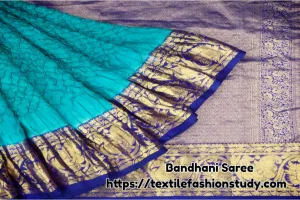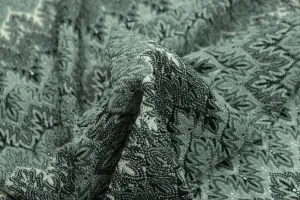Table of Contents
Technical Fabric
Technical fabric is a term used to describe a particular kind of textile material that is designed with certain features to satisfy the requirements of different technical and performance-oriented applications. With the use of cutting-edge technology and creative materials, these fabrics are intended to go beyond standard textiles. Among the many industries that employ technical textiles are sports and outdoor wear, aerospace, automotive, healthcare, and the military.
Technical textiles, which represent innovation, robustness, adaptability, and extensive application across several industries, represent paradigm changes in the textile business. Technical textiles have developed as superior alternatives that include state-of-the-art developments in material science, whereas their traditionally woven equivalents have been widely used for millennia. They are painstakingly designed to display a host of remarkable qualities, such as the ability to absorb moisture, regulate temperature, withstand fire, and have antibacterial qualities. This investigation into the realm of technological textiles will reveal the complexity and range of these contemporary materials, exploring their distinct kinds, intriguing functioning, and extensive use in a variety of sectors.
Properties of Technical Fabrics
There are different types of properties involved with technical fabrics. The key characteristics of technical fabrics are as follows:
- Performance Properties: Technical textiles are renowned for their improved performance properties, which include wind resistance, breathability, waterproofing, moisture wicking, thermal insulation, and UV protection. These qualities make them appropriate for some uses when more conventional materials might not be enough.
- Advanced Materials: To provide the required qualities, technical textiles frequently include high-tech materials like synthetic fibers, laminates, coatings, or specialty finishes. Examples include combinations of microfiber for improved comfort, Gore-Tex for waterproofing, and Kevlar for strength.
- Durability: Comparatively speaking to ordinary textiles, technical fabrics are usually more resilient to deterioration and more long-lasting. For challenging situations and activities, they are therefore appropriate.
- Innovative Manufacturing Processes: Technical fabrics are frequently produced using sophisticated manufacturing techniques, such as knitting, weaving, or nonwoven processes. Further functions can also be added by using coating and laminating methods.
- Specialized Applications: Because of these materials’ unique qualities, they find employment in a variety of applications. Sportswear, outdoor gear (such as tents and backpacks), medical textiles (such as surgical gowns), and protective gear for firemen or military personnel are a few examples of products that employ technical fabrics.

Examples of Industrial Technical Fabrics
There are some industrial technical fabrics that are used for serve industrial purpose. They are-
- Moisture-Wicking Fabrics: Sportswear manufacturers use moisture-wicking fabrics to keep their customers dry by wicking away perspiration from the skin.
- Fire-Resistant Fabrics: Used to make protective gear for industrial workers or firefighters.
- Breathable Fabrics: They enable air to flow and avoid overheating, making them perfect for outdoor activities.
- Waterproof Fabrics: Waterproof fabrics are frequently used to keep wearers dry in raincoats, tents, and other outdoor gear.
- Stain or Water Repellent Fabric: This fabric is use to make table cloth, curtains, furniture, car, bus, train. Airplane seats.
- Anti-Static Fabric: This technical fabric use to make Upholstery and seat covers
- UV- protection Fabric: Some fabrics are UV protector such as Roofs, tents, awnings, blinds, curtains
- Antibacterial Fabrics: Used in medical textiles to prevent bacterial development.
- Insect Repellent Fabric: Different technical fabrics are used as insect repellent fabric such as tents, nets, odor absorption, bedding, furniture, car, bus, train, airplane seats
Technical fabrics play a crucial role in addressing specific performance requirements in various industries, contributing to improved comfort, safety, and functionality in diverse applications.

Types of Technical Fabrics
Technical fabrics are formed into various categories. The following are the different types of technical fabrics:
Meditech Fabrics: In the medical sciences, meditech represents the pinnacle of innovation. Sutures with built-in antimicrobial qualities, prosthetic materials, and bandages that encourage wound healing are products of modern technology and smart textiles. Healthcare results have been transformed by unique qualities including high absorbability, compatibility with human tissues, and pathogen-fighting powers.
Agrotech Fabrics: Technical textiles are a vast field with a wide range of variations made to meet various needs. Improved crop quality, soil preservation, irrigation, and greenhouses are the goals of Agrotech, one well-known kind. Agrotech textiles are a major asset to agricultural operations because of their high tensile strength, resistance to UV light, and better permeability.
Protech Fabrics: Protech Textiles have made a name for themselves in the safety and protection space after leaving the medical field. These fabrics, which are designed to endure high levels of stress, have important characteristics including great mechanical strength, flame resistance, and chemical resistance. Their significance is highlighted by their use in military uniforms, protective garments for hazardous industries, and fire-resistant apparel.
Sportech Fabrics: Sportech fabrics, with their surprisingly broad variety of uses, have taken the sports sector by storm. The revolution brought about by technical textiles is symbolized by climbing ropes and high-performance apparel with attributes that control body temperature, resist abrasion, and offer improved comfort. These intelligent qualities have a significant impact on sports performance.
Mobiltech Fabrics: Referring now to mobility, the Mobiltech category includes fabrics that have been especially created for airships, boats, airplanes, and car parts. Due to their strength, resilience to heat and chemicals, lightweight nature, and capacity to tolerate harsh operating conditions, these materials greatly increase fuel economy.
Oekotech Fabrics: Oekotech, also known as the environmental textiles, has been instrumental in preserving the environment and ecosystem. These textiles support ecological preservation since they are made for waste treatment, land reclamation, and flood control. They also have excellent permeability, soil stabilizing capabilities, reduced CO2 emissions, and resilience to environmental stress.
It is clear from navigating through this plethora of technical textile types that each subgroup performs better in their respective sectors than traditional textiles due to their specific qualities. Application of advanced textiles and their high-performance characteristics emerges as critical to enhancing the efficacy and efficiency of every area, from sports to medical research to agriculture and military.
Technical textiles’ strength is their adaptability, which allows them to be used in seemingly unattainable areas of textile applications. The future of technical textiles is an exciting one to follow, since the industry is expected to continue evolving and innovating. Technical textiles have contributed in a way that has never been seen before, as seen by the ongoing study and growing awareness of these innovative textile solutions.
Functions of Technical Fabrics
Technical fabrics, or technical textiles, have various functionalities. The following are the most common functionalities of technical fabrics:
Meditech technical fabrics: Technical textiles are proving to be not only revolutionary but also life-saving in the field of medical technology. Because of their outstanding properties, including permeability, flexibility, and resistance to microorganisms, they are the material of choice for creating medical equipment. Applications span from artificial organs to wound dressings, indicating a hitherto unheard-of combination of medical research and textiles. Meditech textiles are essential components of the healthcare industry because of their biodegradability, non-toxicity, and sterilization capacity.
Agrotech technical fabrics: Technical textiles have revolutionized agricultural procedures and outcomes in the field of agrotech. These textiles are essential for crop protection, irrigation, and soil stability because of their special qualities, which include biodegradability, strength, and resistance to water. Superior agricultural efficiency is made possible by these fabrics’ capacity to regulate environmental elements and endure the most severe circumstances. Furthermore, it promotes sustainability in an industry that has historically been linked to the loss and degradation of natural resources.
Protech technical fabrics: The protective and defensive qualities of protech textiles have opened up new possibilities for workplace and personal safety. Due to their flame, bulletproof, and chemical resistance qualities, these advanced textiles are a valuable asset to fire departments in the security industry. Protech textiles are reliable defensive materials in a world where safety is valued more and more.
Sportech technical fabrics: Sportech fabrics, the hidden heroes of sporting venues, provide comfort and safety while improving athletic performance. These textiles control temperature, lessen wind resistance, cushion impacts, and even track important data, creating an atmosphere that is conducive to the success of athletic endeavors.
Mobiltech technical fabrics: Mobiltech textiles accelerate human development by enabling mobility and transportation. Advanced composite materials are made of lighter, stronger, and more robust materials including carbon fibers and high-performance glass fibers for a variety of transportation modes. These provide vehicles more longevity, safety precautions, and energy economy in the air, sea, and land dimensions.
Oekotech technical fabrics: Oekotech textiles or geo textile are the leaders in waste management and environmental safety. These technological materials significantly contribute to reducing the environmental problems we presently confront, from recycling plastic waste to making environmentally friendly packaging and containers.
Technical fabrics are preferable to conventional textiles primarily because of their functions, durability, and flexibility. These synthetic materials offer tailored solutions for a variety of application domains, pushing the boundaries of natural fibers.
It is only reasonable to expect more advancements in the field of technological textiles as we move forward. Biotechnological integration, nanotechnology improvements, and “smart” wearables are anticipated to meet ever-more-detailed and exacting criteria. The field of material science and technology is always changing, pointing to an exciting future full of new discoveries. The arrival of this breakthrough is heralded by technical fabrics, which are also a monument to human ingenuity and development.

Photo by divazus on Unsplash
Applications of Technical Fabrics
Technical fabrics have varying uses in different sectors. Technical textiles are changing the face of many industries, from transportation to health to agriculture, and they have broad uses. A thorough comprehension of the use of these technical fabrics reveals the extent of their creativity and the ways in which they have transformed their respective fields.
Meditech Fabrics:Meditech textiles, which showcase innovative developments in the healthcare industry, have supported healthcare solutions. By combining fluid resistance, biocompatibility, and antibacterial qualities, they make it possible to produce smart wound dressings, implants, and hospital linens. Their contribution to the development of wearable devices that can track physiological markers is equally noteworthy.
Agrotech Fabrics:Agrotech textiles have opened up new possibilities in the field of agriculture. They have improved farming techniques while maintaining essential performance characteristics like moisture retention and weed control. Through the use of crop protection nets, mulching films, and sophisticated irrigation systems, farmers have been able to increase agricultural output and ease the enormous challenge of feeding the world’s growing population.
Protech Fabrics: Protech fabrics protect people in dangerous areas because of their great tenacity and tolerance to harsh circumstances. They play a key role in the creation of equipment used in the aerospace sector as well as bulletproof vests for law enforcement and fire-resistant apparel for firefighters. They provide the best defense against thermal, chemical, and mechanical risks at the industrial level.
Sportech Fabrics: Sportech fabrics are a noteworthy invention that enhances sports performance. They are used in the design of sportswear and equipment because of their breathability, elasticity, and moisture management. In addition, they are a major component of grass systems, safety netting, and movable shelters seen in sports venues.
Mobiltech Fabrics: The emergence of technological fabrics has not spared the realm of mobility. In this area, mobiltech textiles are essential for improving comfort and safety in a variety of transportation settings. They provide structural roles in the automobile, aerospace, and marine industries and are not only upholstery textiles.
Oekotech Technical Fabrics: Technical textiles made of oekotech materials lead the way in both environmental safety and waste management. From geosynthetics used in waste treatment and landfill erosion prevention to filtering fabrics, their contribution is crucial to supporting sustainable practices.
These technical textiles’ exceptional durability, extraordinary flexibility, and diversified utility highlight their distinctiveness. They are revolutionizing the landscape of modern textile applications by simultaneously meeting the needs of distinct industries and bringing in a level of efficiency and sophistication never seen before.
Technical fabrics are expected to keep growing and changing as we go into the future. This is particularly true since funds for creative R&D initiatives are being allocated in response to growing awareness of their usefulness and functioning. Future technical textiles will enable an even more technologically advanced—and precisely tailored—world, much as current technical textiles are improving industry and living today. In the words of Charles F. Kettering, “We should all be concerned about the future because we will have to spend the rest of our lives there.” Thus, utilizing the potential of technology textiles is a project that will surely influence and improve future generations.

Technical Fabrics: An Identifiable Development from Conventional Materials
Textiles have been an essential component of human existence from the beginning of civilization, providing a wide range of uses including clothing, shelter, and artistic expression. In the twenty-first century, as technology progresses more and more, a new category of textiles known as “technical” textiles has arisen. Technical textiles are usually subtle and offer a blend of innovation, science, and use that sets them apart from more conventional fabrics.
The word “technical” refers to textiles that are made for their specific, technical qualities and performance capacities rather than their aesthetic appeal. Accurate engineering and technological knowledge suggest a higher degree of utility than traditional textiles. These textiles are specifically engineered to fulfill certain requirements, such as increased robustness, resilience to different environmental conditions, and particular physical and chemical characteristics, which qualify them for use in a wide range of industrial, pharmaceutical, and defense applications.
These technological fabrics are made with intricate processes that are beyond the scope of conventional production. It entails the skillful use of cutting-edge yarns and fibers in addition to cutting-edge finishes and treatments. Due to their better performance over natural fibers, technologically refined fibers, notably high-strength, high modulus synthetic variations, are widely utilized. Just this element highlights the significant distinction between traditional and technological textiles.
Technical textiles have a performance level that surpasses that of traditional materials. For example, their increased resilience to external elements including UV deterioration, climate, and microbes expands its applicability outside of confined home environments. Furthermore, these materials are moving into the realm of cutting-edge applications thanks to the addition of clever features like moisture-wicking, heat-retaining capabilities, and the capacity to block dangerous radiations.
Technical textiles push the limits of what materials can accomplish, in contrast to conventional textiles, which often place an emphasis on comfort and beauty. Technical textiles are used in many aspects of daily life, including as industrial machinery belts, protective apparel for harsh environments, and sporting equipment.
Furthermore, the expansion of these textiles’ markets is evidence of their growing popularity in comparison to conventional materials. Analysts predict that the worldwide market for technical textiles will grow to a value of USD 244.6 billion by 2028, which is a clear sign of a paradigm shift in consumer preferences for fabrics.
The key characteristics that set “technical” textiles apart from conventional materials are their enhanced utility, unique production techniques, and cutting-edge applications. They stand for man’s ongoing effort to transform the planet via the use of science and technology—an attempt that is only expected to grow in the years to come.
The textile frontier has shifted towards more inventive, high-performance solutions that go well beyond traditional aesthetic appeal due to the adaptability of technical materials. Thanks to their unique qualities and state-of-the-art technology, these contemporary materials are revolutionizing a wide range of industries, from sportswear to medical textiles, military gear to automotive textiles, and much more. Their natural ability to combine functionality, comfort, safety, and longevity has raised industry standards and steered the sector in the direction of efficiency, sustainability, and dependability. Technical textiles are playing an increasingly important role in the development of innovative material applications since they meet and surpass strict industrial standards.





